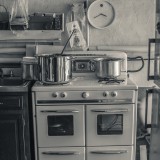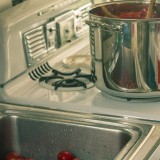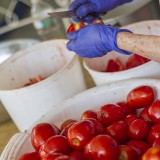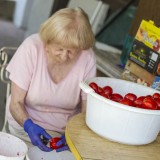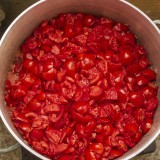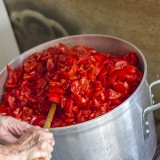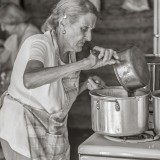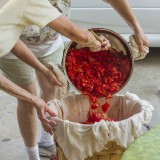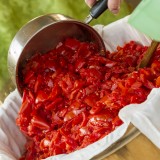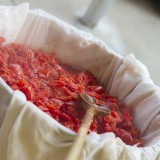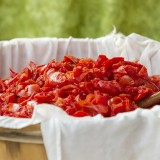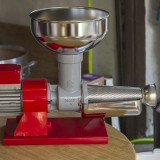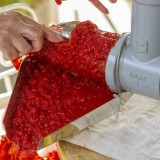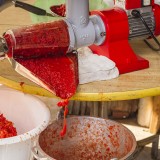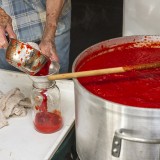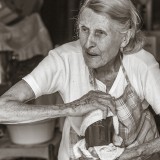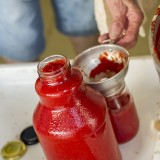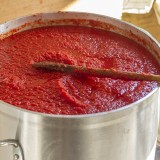Every August, my grandmother (or nonna for all the Italians out there) spends days making some of the best tomato sauce I’ve ever tasted. And one thing every Italian knows is that nobody makes it as good as Nonna.
I grew up eating my grandmother’s sauce like it was going out of style. I didn’t think twice about what went in to making it, just that we always had what seemed like an endless supply. It wasn’t until I was much older that I realized how much time and effort actually goes into creating this amazing sauce. After years of sitting on the sidelines, I decided to grab my camera and pay tribute to our family’s work of art.
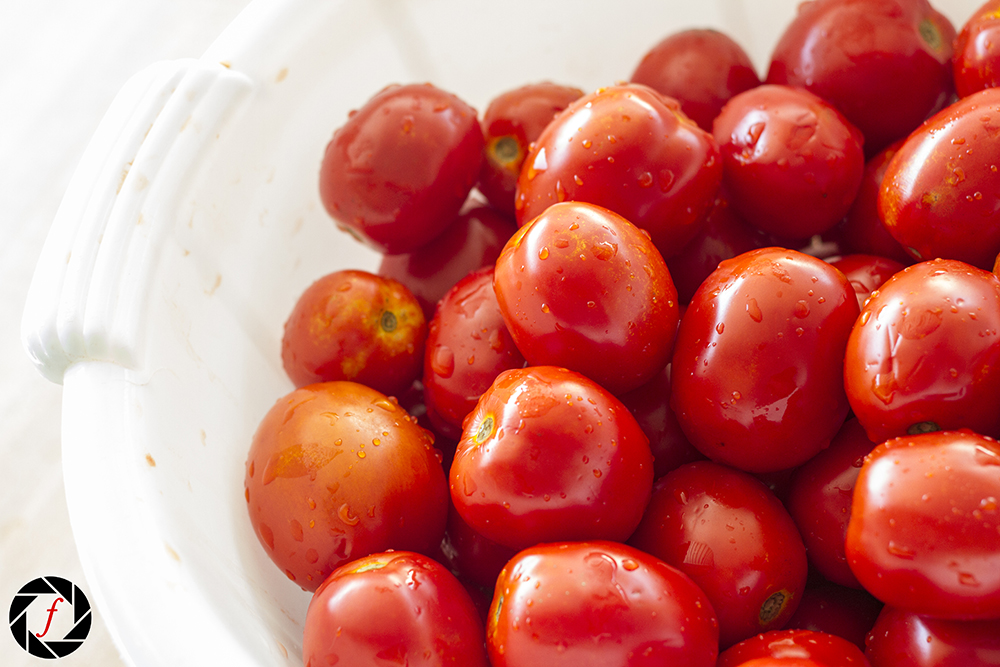
First thing’s first, my grandmother, along with her sister and her niece (already you can see this is a family process), start by purchasing crates worth of fresh Roma/Italian Plum Tomatoes. You can use other tomatoes but she prefers using these because they contain more tomato flesh and less of those gooey juices that hold the seeds.
Next thing she does is wash all the tomatoes very well. She cuts out the dimple where the tomato was connected to the vine, along with any bruised or cut areas of the skin. She chops the tomatoes into chunks and places these chunks in a large pot. Cutting them this way allows the tomatoes to cook faster.
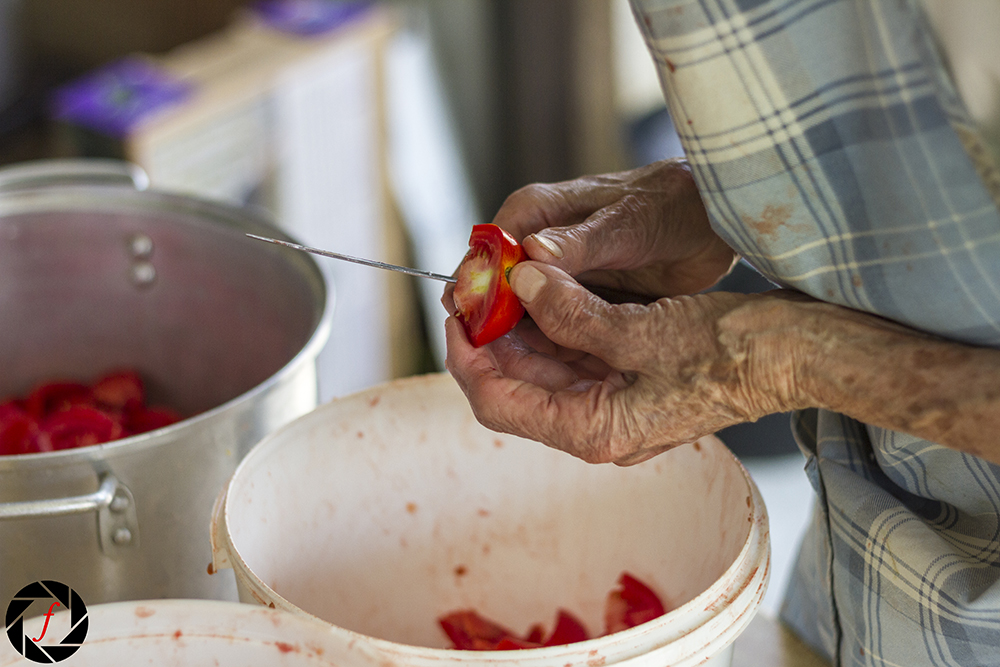
This stage is the MOST important part of creating a great batch of sauce! Because of that, she refused to let me help due to my lack of experience. Her not allowing me to learn cooking skills with my own hands caused me to have to fend for myself in the kitchen. The paradox of our childhood: “You can’t do this because you don’t know how.” “But I want to learn.” “Ha ha ha. Some day.” Rinse and repeat throughout childhood!
So where was I? Oh yes. If even ONE spoiled tomato gets mixed into the rest, the entire batch will be tainted! Usually, it’s noticeable if any tomatoes are spoiled, but for some of the softer questionable ones, my grandmother will taste a small piece. If it’s too tangy, sour, or acidic, it’s gone. If it’s sweet and tastes good, it gets to stay!
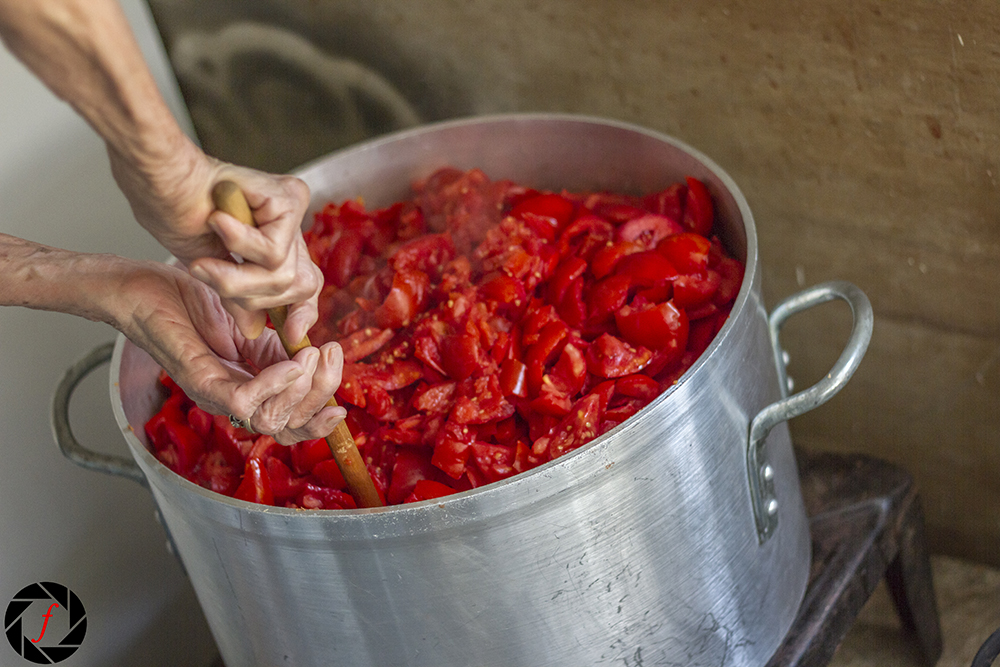
She cooks the tomato chunks in a large pot. Like many grandmothers, specifics, measurements, and timing are as rare and mysterious as a Bigfoot siting! After an hour or two of occasional stirring, and an afternoon espresso break, much of the water content has been extracted and the juices have thickened up. The tomato chunks are also soft and moist which will make separating the skins and seeds a lot easier.
She takes out, in ‘grandma’s measurements’, a “small pot’s worth of the ‘juice’” to add back later if the sauce is too thick. At this point, she lines a wooden pale with a cloth sheet and pours the tomatoes in. The sheet is porous enough to allow for only the water to drain out. Any tomato chunks or juices that are too thick remain in the cloth.
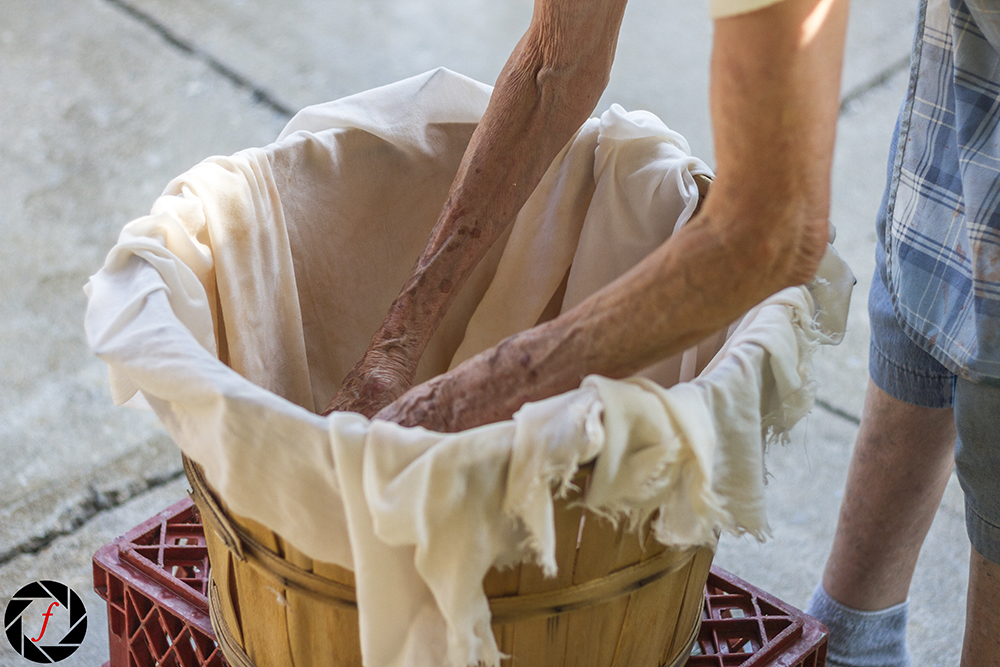
This is where things get really good! The drained tomato chunks and juice are then pushed through an electric grinder, which separates the skins and seeds from the softened flesh. The smashed up tomatoes drip out as a smooth sauce. She boils this sauce for about a half hour to thicken it up.
Meanwhile, the second most important part of this whole process begins. She cleans the jars she’ll be using to store the sauce and then places them in a pot of water. She heats them up just before a boil in order to sanitize the bottles. Skip this step and you can kiss your sauce good bye a lot faster than you’d think. Plus, adding boiling hot sauce into a cool glass jar won’t end well!
Once the jars/bottles are sterilized, she pulls each one out of the water, carefully emptying them out and pouring in the sauce. She carefully seals each jar nice and tight. The heat will cause a perfect vacuum that will help maintain the freshness of the sauce for months! She stores the bottles in a bunch of thick blankets and quilts (what she refers to as “putting them to bed”). Here the sauce will slowly cool and thicken for about a week. It took her all day to make about 30 bottles of this delicious sauce and after a few more long days of hard work, she had enough to last until next summer.
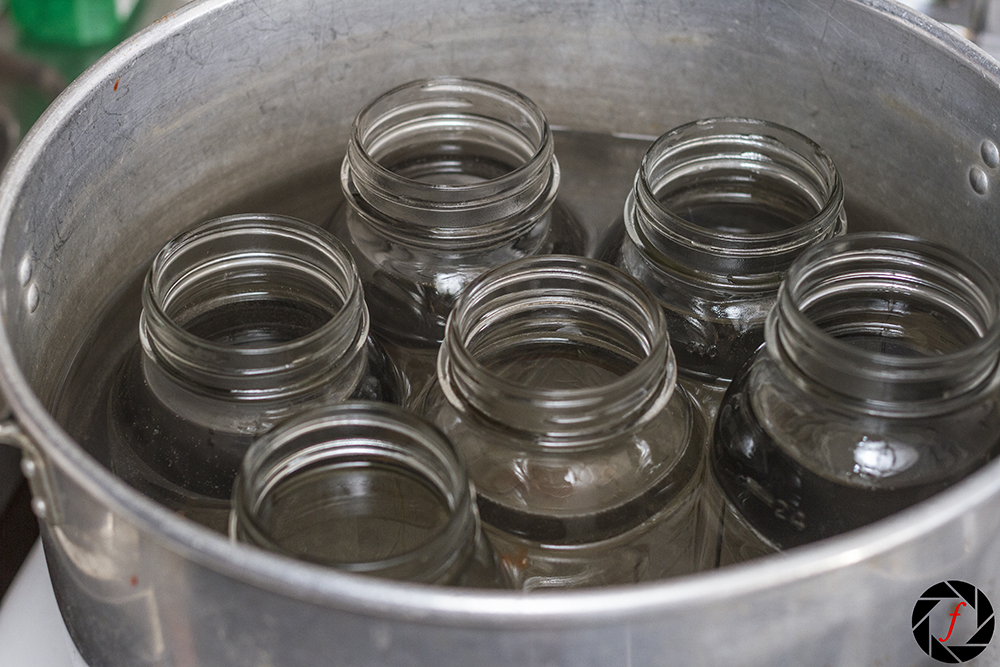
At this point, you have the perfect, sweet, thick tomato sauce that you can use as a base for your other sauces and pasta dishes. Note: this sauce is not exactly a finished product and wouldn’t be used as-is on pasta. You can use it this way on pizza or if you are creating other sauces like Bolognese or Vodka sauce. Otherwise, if you just want some old fashion tomato sauce on your pasta, cook it in a pot with some olive oil, sautéed garlic, fresh basil, and a little salt for about 15 minutes. Sometimes, nothing beats a classic!
Ok, ok. I know what you’re thinking. “My grandma does it her own way and her sauce is delicious!” Truth is, every nonna has their own way of making their ‘salsa’ and no one will beat your Nonna’s sauce. This is just what makes our sauce ours and it’s our family tradition.
So what is that special thing that makes every nonna’s sauce so much better than the rest? Special ingredients? Love? Who knows? Maybe it’s the family connections we share, the memories and nostalgia, or the amount of work that goes into it? Whatever it is, I’m grateful and hope that some day I can put just as much passion into continuing this tradition and passing it on to further generations.
So do you have any culinary traditions you share with your family? If so let us know in the comments!


